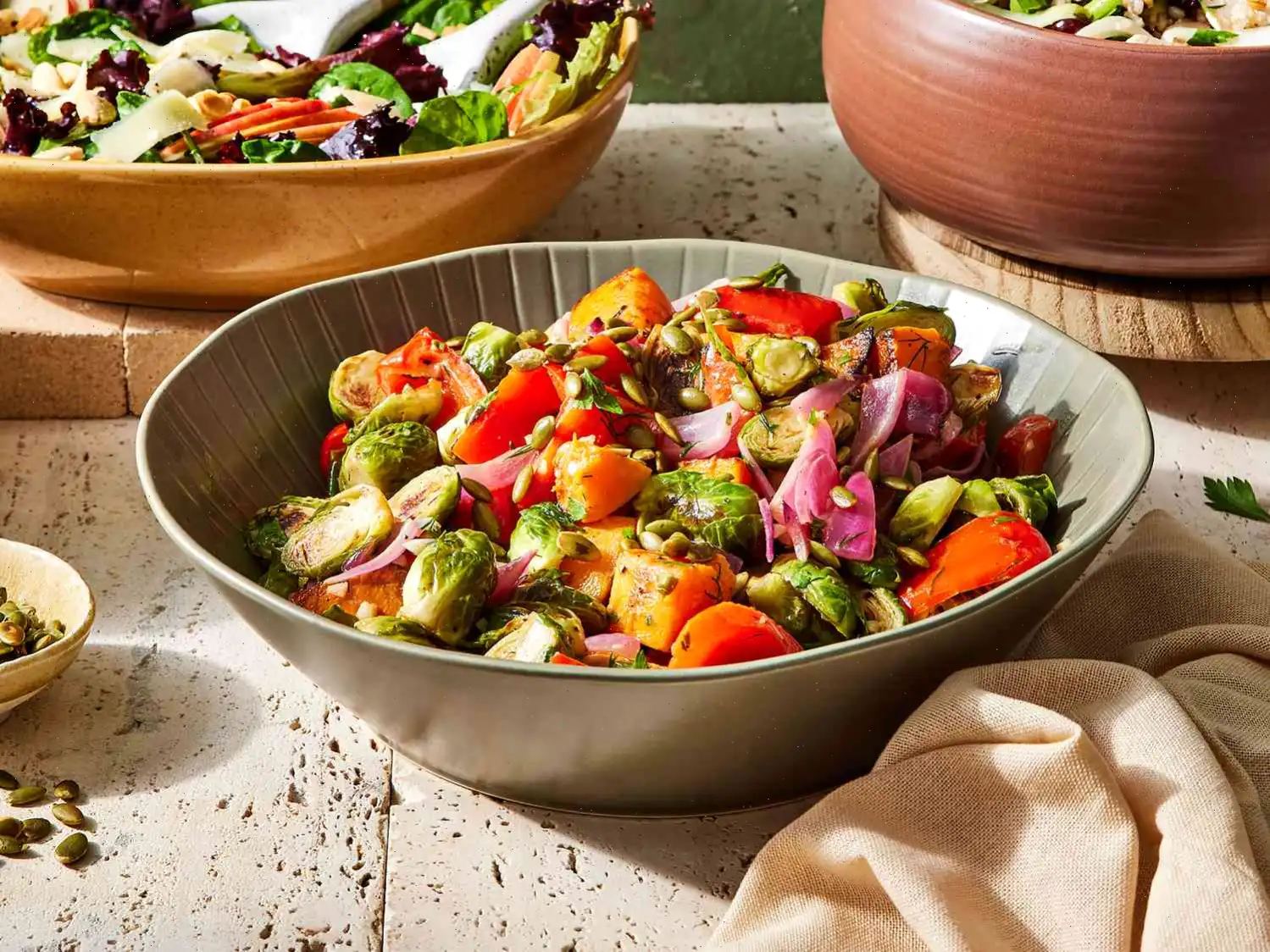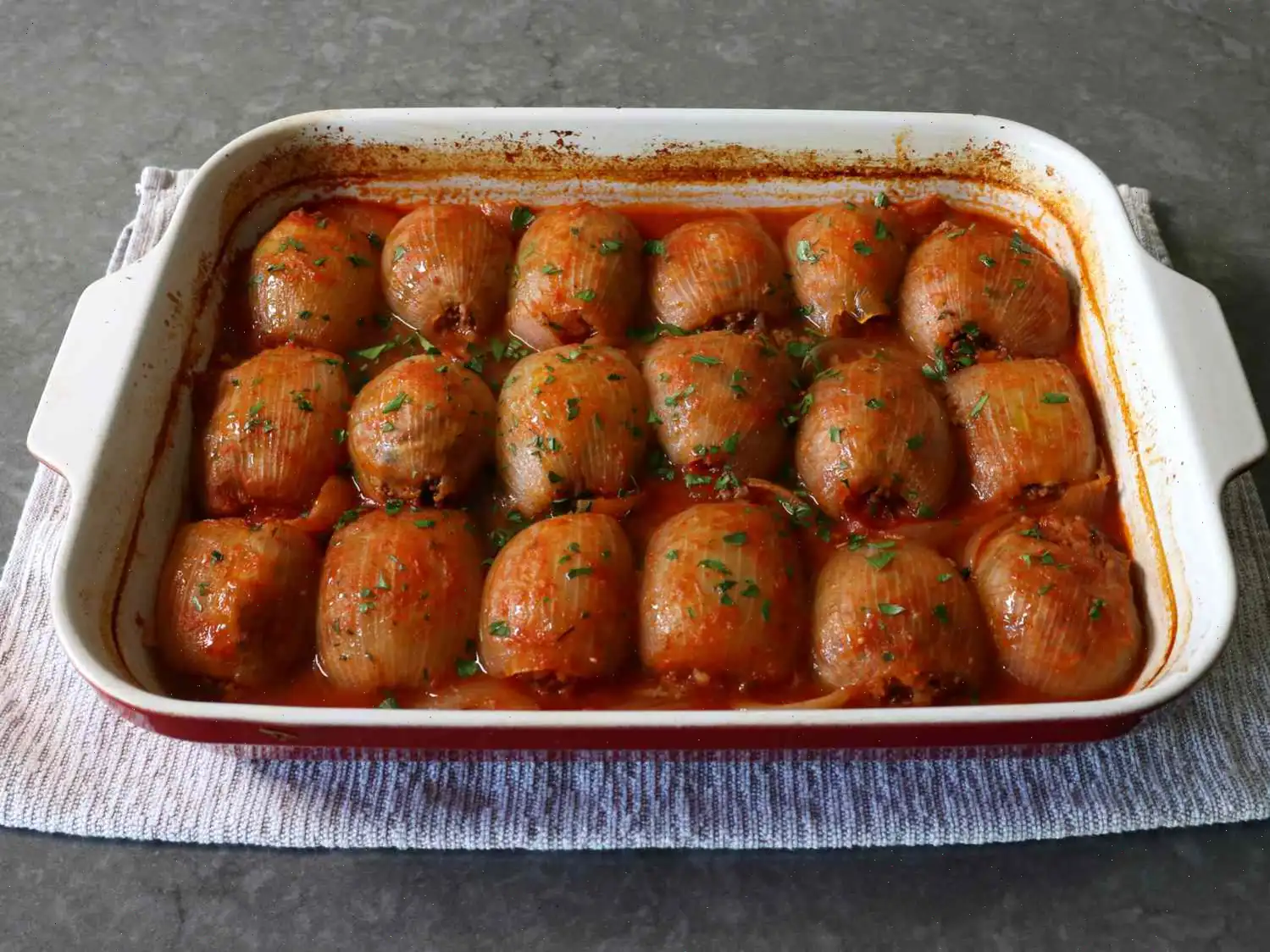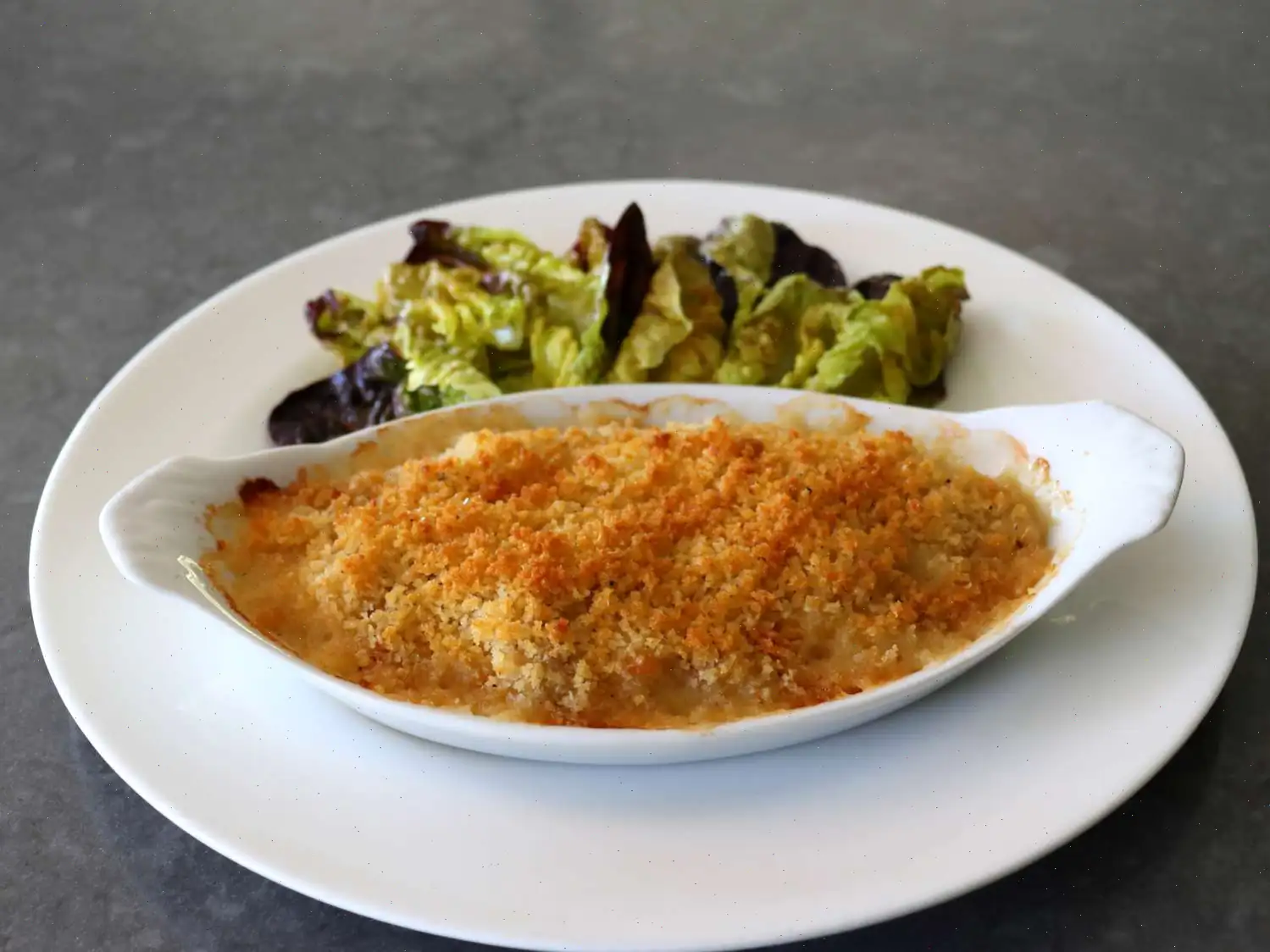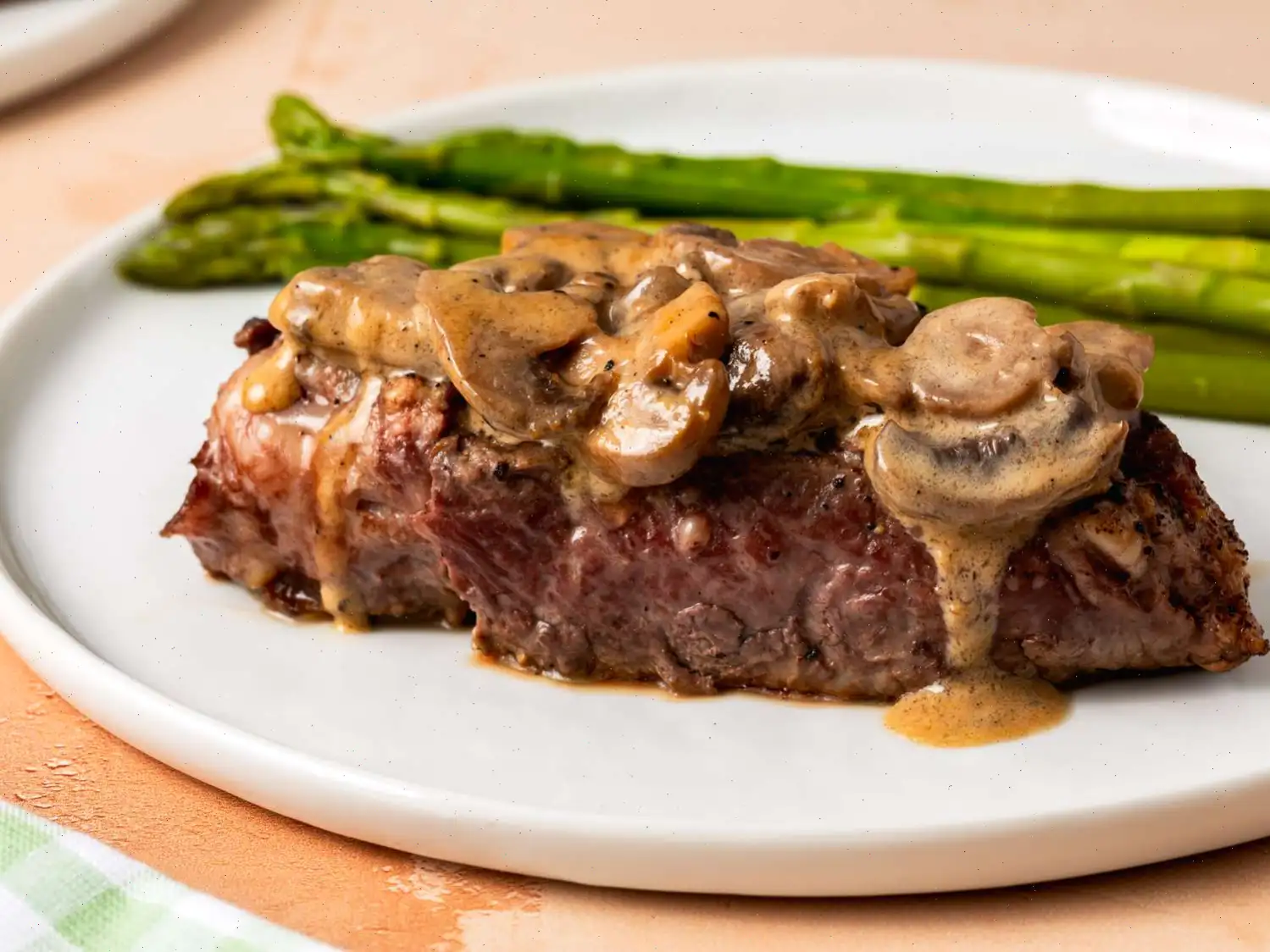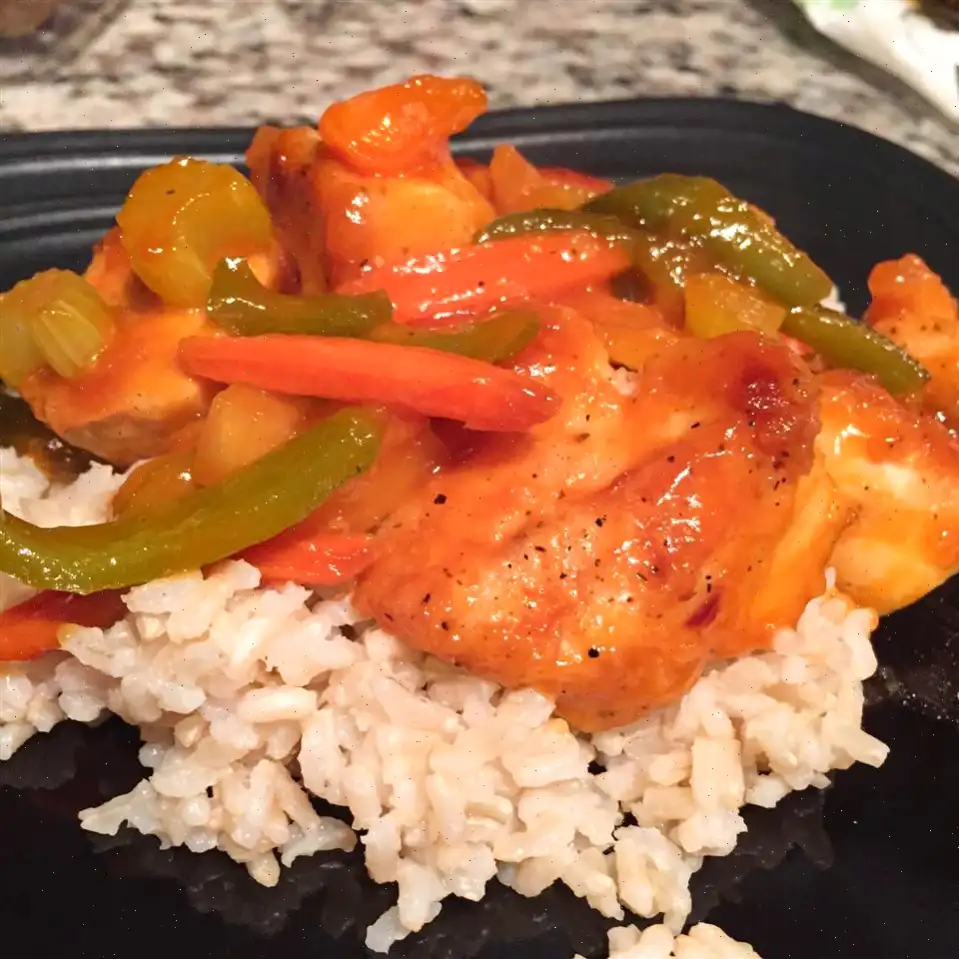
Rotisserie Chicken Enchiladas Recipe
Ingredients
- 1 (16 ounce) jar salsa verde
- 2 tablespoons avocado oil, or more as needed
- 8 (6 inch) corn tortillas
- 1 cup shredded rotisserie chicken
- 1/2 cup finely chopped onions
- 1 cup crumbled Oaxaca or shredded Monterey Jack cheese
- 1/2 cup sour cream, or to taste
- Fresh cilantro sprigs and lime wedges for optional garnish
Directions
Step 1: Place a strainer over a bowl and pour the salsa into the strainer. Strain out the excess liquid until only 1 1/2 cups of salsa remains. Discard the liquid.
Step 2: Heat the avocado oil over medium-low heat in a large nonstick skillet. Place 2 tortillas into the warm oil and heat them for about 1 minute on each side. Remove the tortillas and set them in a single layer on a work surface. Repeat with the remaining tortillas.
Step 3: Wipe the skillet with a clean paper towel and place it back over low heat.
Step 4: Take each tortilla and place about 2 tablespoons of shredded chicken across the center. Add approximately 1 tablespoon of chopped onion and 1 tablespoon of cheese on top of the chicken. Reserve any extra cheese for later use.
Step 5: Roll up each tortilla to form an enchilada and place it seam-side down in the skillet. Pour the prepared salsa over the enchiladas and sprinkle with the remaining cheese.
Step 6: Cover the skillet and heat the enchiladas gently until the cheese is melted, about 3 to 5 minutes.
Step 7: Once the cheese is melted, top the enchiladas with dollops of sour cream and garnish with fresh cilantro sprigs and lime wedges. Serve immediately.
Nutrition Facts (per serving)
- Calories: 499
- Total Fat: 30g (38% Daily Value)
- Saturated Fat: 10g (52% Daily Value)
- Cholesterol: 113mg (38% Daily Value)
- Sodium: 1029mg (45% Daily Value)
- Total Carbohydrate: 33g (12% Daily Value)
- Dietary Fiber: 6g (20% Daily Value)
- Total Sugars: 7g
- Protein: 26g (53% Daily Value)
- Vitamin C: 17mg (19% Daily Value)
- Calcium: 282mg (22% Daily Value)
- Iron: 2mg (12% Daily Value)
- Potassium: 670mg (14% Daily Value)
* Percent Daily Values are based on a 2,000 calorie diet. Your daily values may be higher or lower depending on your calorie needs.
The Origins of Rotisserie Chicken Enchiladas
Enchiladas, a staple of Mexican cuisine, trace their origins back to pre-Hispanic Mesoamerica, where corn tortillas were commonly filled with various ingredients and topped with chili sauces. The modern version of chicken enchiladas, particularly those using rotisserie chicken for convenience, evolved as Mexican cuisine blended with contemporary cooking practices in North America. Rotisserie chicken, widely available in grocery stores, became a practical shortcut, allowing home cooks to enjoy rich, flavorful enchiladas without the hours of labor traditionally required.
Regional Variations
While enchiladas are popular throughout Mexico, regional differences define their flavor profiles. In central Mexico, enchiladas suizas are often topped with creamy sauces, while northern regions favor spicier red sauces. The use of salsa verde, as in this recipe, is particularly common in the Mexican states of Puebla and Veracruz. Adding rotisserie chicken modernizes the dish without losing its authentic touch, making it popular across the United States as a convenient and flavorful option.
Differences from Similar Dishes
Enchiladas are often confused with burritos or tacos, but they differ in both preparation and presentation. Unlike tacos, which are served open, enchiladas are rolled around a filling and covered in sauce before baking or warming. Burritos typically use flour tortillas and are larger, often containing rice and beans along with meat, whereas enchiladas traditionally use corn tortillas and focus on the harmony of the filling, sauce, and cheese. Using shredded rotisserie chicken simplifies the process, differentiating it from slow-cooked or freshly roasted chicken versions.
Typical Serving Context
Rotisserie chicken enchiladas are versatile and served in various contexts, from casual family dinners to festive gatherings. In Mexican households, they often appear during celebrations like birthdays or holidays, accompanied by sides such as Mexican rice, refried beans, and fresh guacamole. In restaurants, they are frequently presented as a comforting entre, garnished with sour cream, cilantro, and lime wedges, emphasizing both visual appeal and flavor balance.
Interesting Facts
- The word enchilada comes from the Spanish verb enchilar, meaning to season with chili.
- Using rotisserie chicken not only saves time but also adds a smoky, seasoned depth to the enchiladas.
- Oaxaca cheese, commonly used in this recipe, is known for its stringy texture and mild, creamy flavor, similar to mozzarella.
- Enchiladas have been adapted globally, leading to creative variations with cheeses, sauces, and proteins beyond the traditional chicken or beef fillings.
- This dish exemplifies the fusion of convenience and tradition, showing how classic Mexican flavors can be preserved while adapting to modern lifestyles.
FAQ about Rotisserie Chicken Enchiladas Recipe
Comments
Michelle Harris
04/13/2024 04:03:25 AM
I enjoyed this recipe and made some adjustments to enhance the flavor. After noticing a review that suggested it needed more taste, I decided to modify it. I found that I needed more sauce than the original recipe called for, so I started by sautéing some onions and adding 2 minced cloves of garlic. After briefly cooking the onions and garlic, I removed them from the pan and proceeded to make a roux by adding 2 tablespoons of olive oil and 2 tablespoons of all-purpose flour. Next, I whisked in 1 and 1/2 cups of chicken broth, along with 1 teaspoon each of cumin, garlic powder, and onion powder, and 1/4 teaspoon of black pepper. The end result was a hit with my family!
Emily Williams
04/10/2025 12:34:22 AM
These enchiladas were incredibly easy to make and perfect for using up leftover rotisserie chicken! I opted for smoked pulled chicken from my local grocery store, which worked really well in this recipe. I enjoyed the crunch and flavor that the raw onion added, but if you're not a fan, you could quickly sauté them with the chicken beforehand. I used flour tortillas because that's my personal preference. I'm not very skilled at wrapping enchiladas (as you can see in my photo), so more guidance on that step would have been appreciated. I decided not to drain the salsa verde as it seemed unnecessary. Next time, I might assemble the enchiladas in advance and just pop them in the oven on a busy weeknight for even less hands-on time. Thank you for sharing this recipe!
Anna Allen
04/26/2023 04:09:38 PM
These garlic dishes were mediocre for our taste. While they were indeed simple, we couldn't help but feel that something was amiss - perhaps some additional spices or tomatoes would have enhanced the flavor. Regrettably, they fell short in terms of taste, but I am open to trying this cooking method again and appreciate the concept behind it.



